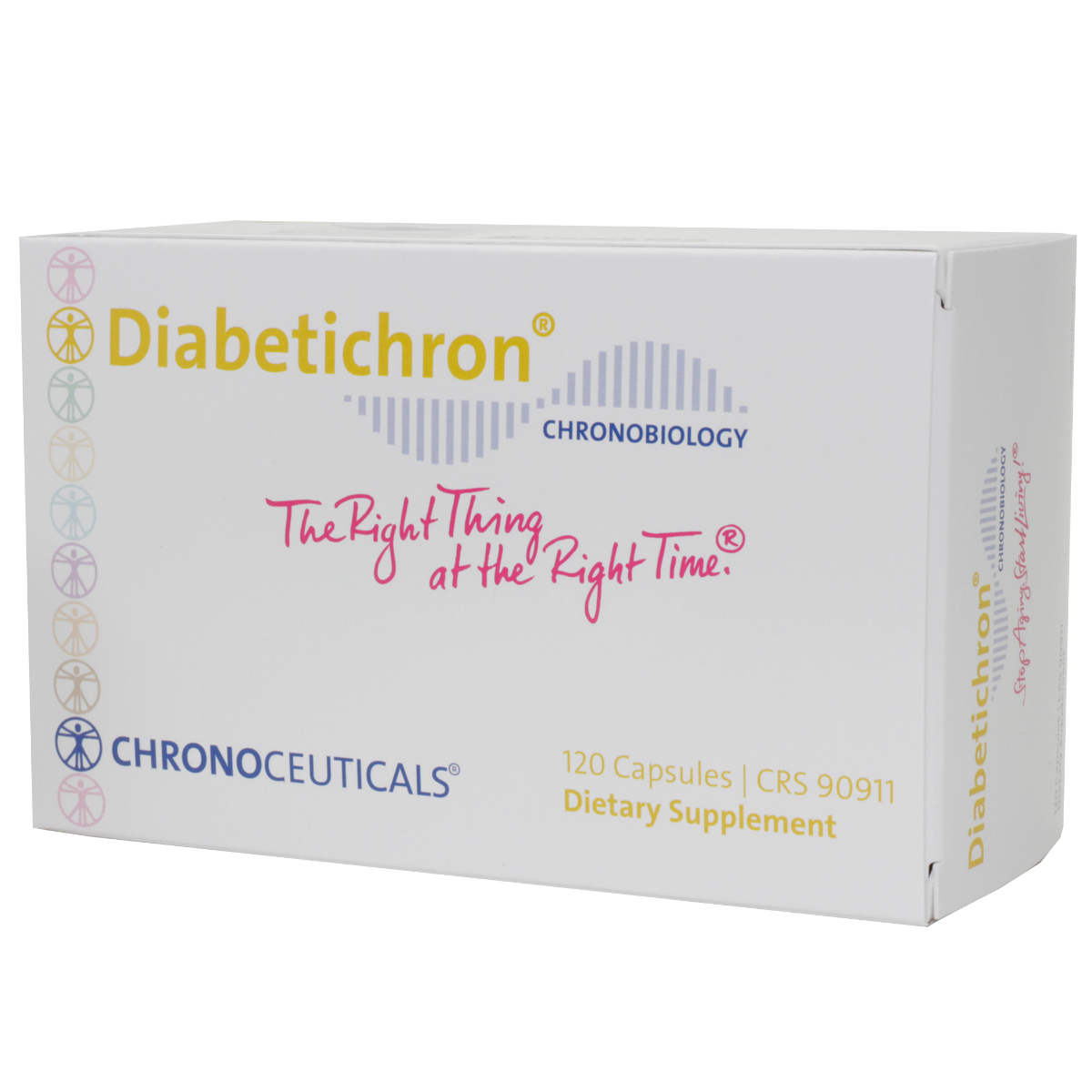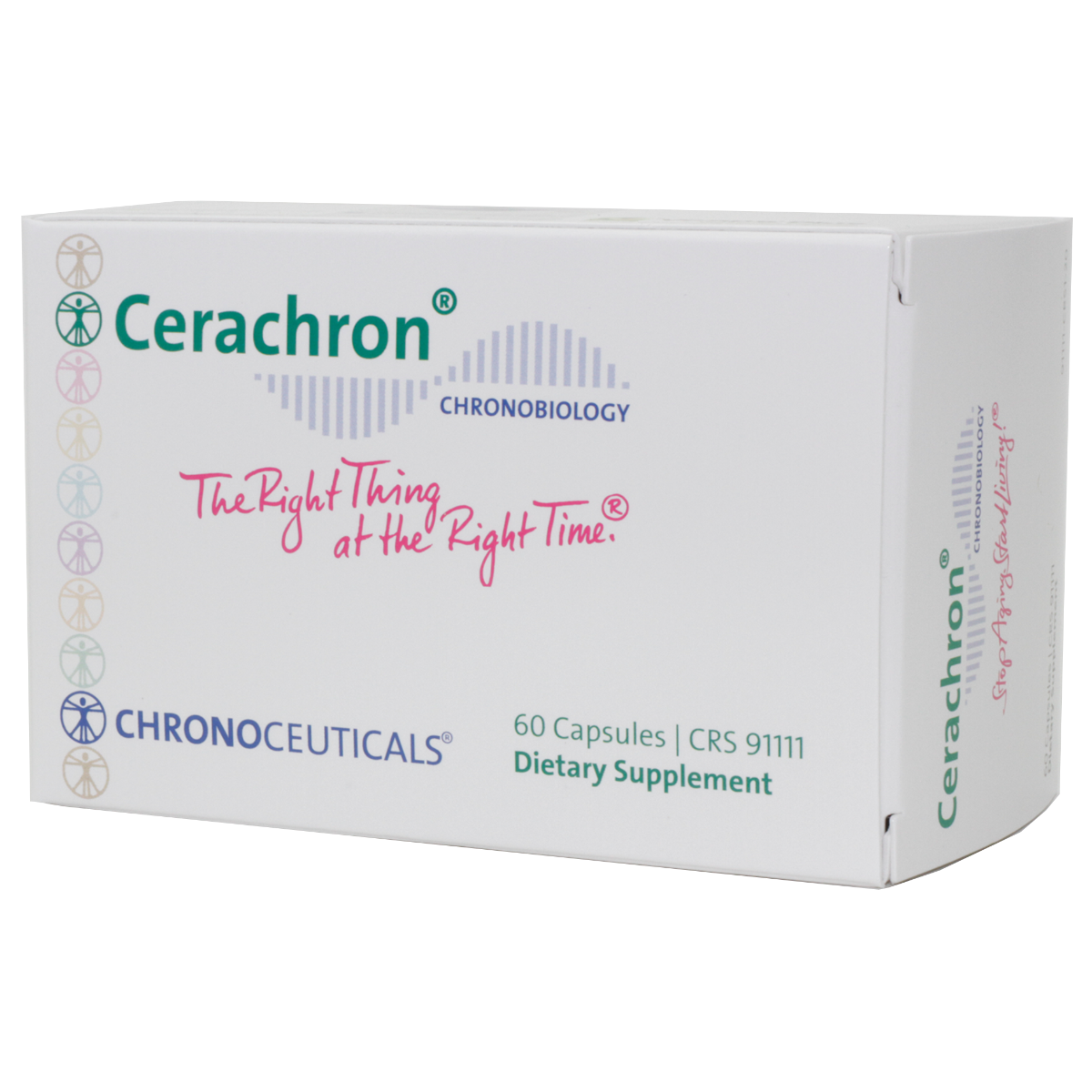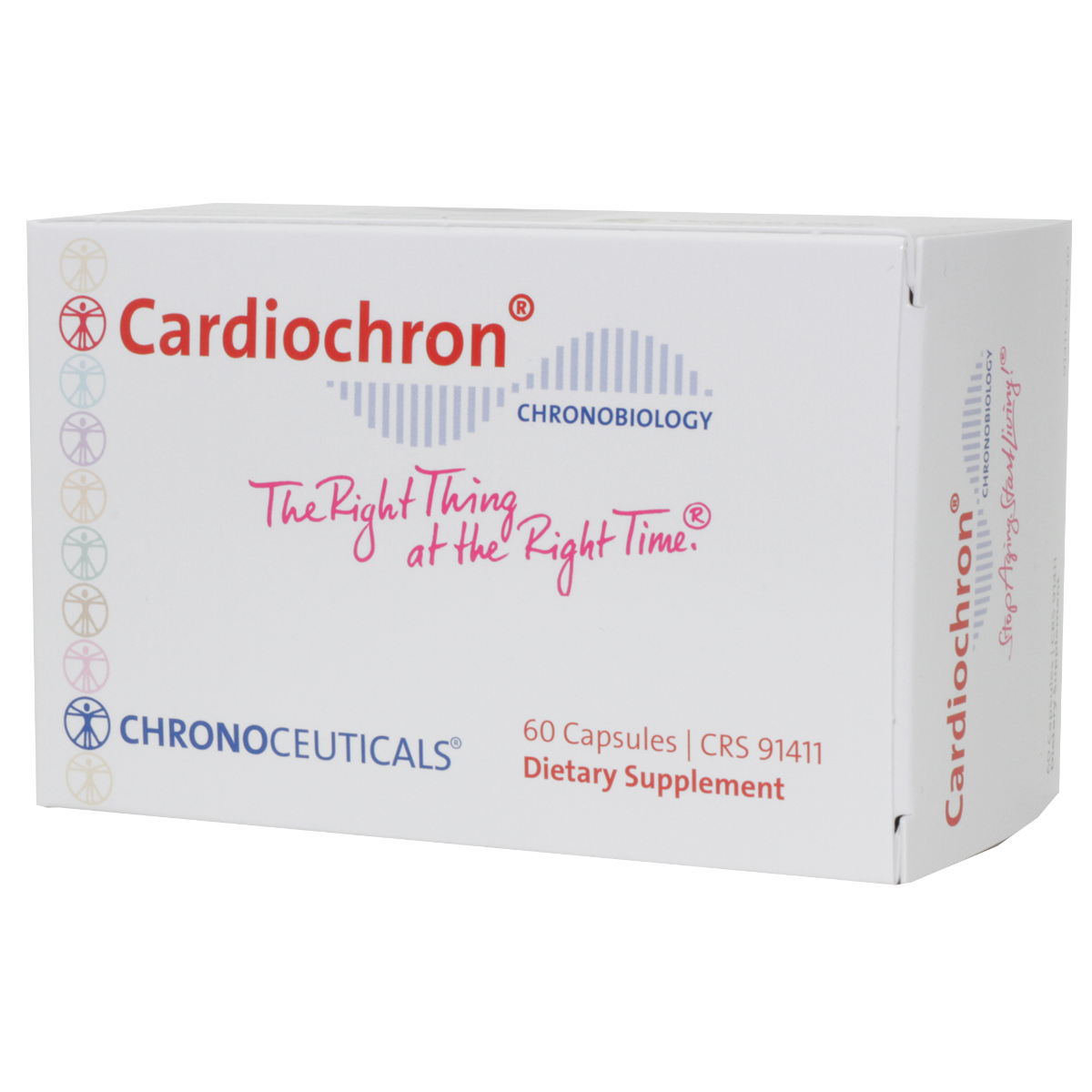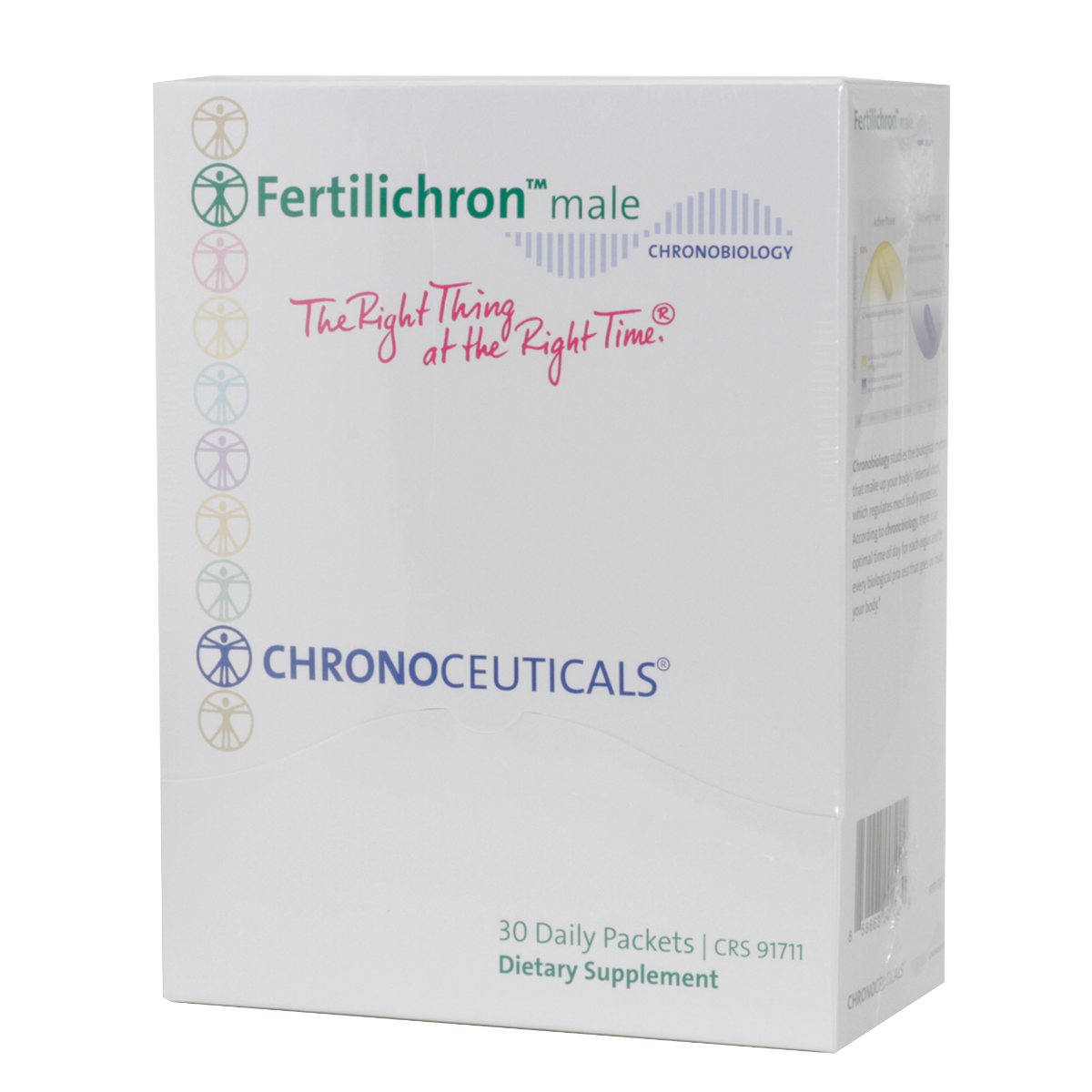$39.95
- Chronobiological multi-vitamin formula for women
- Enhances vitality and energy
- Supports optimal performance levels
(1 Box: 120 Capsules) – Vitachron® female is a multi-vitamin preparation enriched with minerals to support a health-conscious diet. Vitachron® female was formulated based on the idea that specific vitamins and minerals are required by the body at certain times of the day, providing a unique and perfect chronobiological complement to a healthy diet.
113 in stock
Description
Vitamins are the fundamental elements of life. They are of essential importance for health, as our body simply couldn’t function without them. Along with minerals, vitamins are involved in most of the chemical reactions that take place in the body. Vitamin and mineral deficiencies are often at the root of many symptoms and health conditions.
It is crucial that the female body has access to certain micronutrients at specific times of day in order to perform basic daily biological tasks. In cases of vitamin or mineral deficiencies, the body will compensate temporarily by using nutrients stored in the muscles, bones, skin and liver. However, in the long term, symptoms of severe deficiency will eventually develop. A lack of vitamins and minerals primarily interferes with the conversion of food into energy. Additionally, each vitamin or mineral deficiency present will affect the level of support or protection from disease guaranteed by that particular vital substance.
Vitamins and minerals are known as bio-catalysts because they have the ability to induce, speed up or slow down biological changes within each cell. The same is generally true for enzymes, co-enzymes, amino acids, vegetable fatty acids, secondary plant substances and other vital food constituents, while the many phytonutrients (nutrients obtained from plants) can weakly mimic various hormones.
Chronobiology: Understanding the biological processes that occur in relation to the body’s daily rhythms is a recent and new challenge in science encompassed by the field of chronobiology. According to the principles of chronobiology, the body requires specific substances at specific times of the day, while other nutrients are optimally absorbed at other times of the day. In addition to certain nutrients being more effective at different time of the day, it has been proven that taking specific combinations of nutrients promotes the absorption of the various vitamins and minerals, while other combinations may actually hinder optimal absorption.
The result: The results of the findings of chronobiology are embodied in the science of chronotherapy, which seeks to improve metabolic processes and promote optimal absorption of vital nutrients based on chronobiology’s ‘time of day’ principles. All of the vitamins, trace elements, minerals and plant extracts in Vitachron® female have been combined in a way that they are most available to the body at the optimum time of day.
Furthermore, the combination of active substances in Vitachron® female has been specially adjusted to create a unique formula specific to female metabolism, resulting in the perfect supplement for daily use for women.
GREEN MEDICINE
Despite the absence of “scientific” knowledge, even early human civilizations used medicinal herbs to eliminate and counteract the effects of inflammation and oxidative stress. Today, we are fully aware of the negative effects of these two common issues – in fact, phytochemicals that are known to help support healthy cellular inflammatory processes are an important pillar of Ayurvedic (eastern Indian) medicine.
Plants produce approximately 70,000 to 100,000 phytochemicals in the form of acids, fats, phenols, amines, sulphur compounds and polysaccharides. The lycopene found in tomatoes, isoflavones in soy and flavonoids found in many fruits are just a few examples of these powerful phytonutrients.
These phytochemicals aid plants in a variety of ways. A large portion help with metabolic tasks such as storing the energy obtained from sunlight in the form of carbohydrate molecules. Others are responsible for the amazing capabilities of plants’ immune systems, such as being able to survive heat shock and nighttime frost. A single plant may contain a variety of different phytochemicals: An orange, for example, contains carotenoids, limonoids and phenols.
Humans can benefit from incorporating into their daily diet foods or supplements that provide nutrients from three groups of particularly highly active phytochemicals:
Enzymes: Only enzymes can break our food down into the tiniest components that can be transported through the intestinal walls. Plant-based foods cleverly contains precisely the types of enzymes needed in order for the plant to be utilized as food. For example, olives and bananas contain lipase enzymes, which are needed to digest the fat contained within these fruits. Wheat and peaches contain the enzyme amylase to help with carbohydrate digestion. Conversely, inhibiting the activity of amylase enzymes can slow the absorption of carbohydrates in the intestine, which can help with weight regulation.
Vitamins and pre-vitamins: These are mainly plant-derived compounds that are vital for organ function in humans. Without them, we are at a higher risk of suffering from life-threatening deficiencies. This is also true for the minerals and trace elements that are absorbed through the roots of plants.
Phytoalexins: Without phytoalexins, good health and a long life would be impossible. The word “phytoalexin” comes from the Greek words “phytos” (plant) and “alekein” (to ward off), and all plants produce these substances to protect themselves against pathogenic microorganisms. After all, according to some estimates, there are up to 29 million species of bacteria, insects and fungi. Phytoalexins are formed within 24 hours after an injury, attack or tissue injury. They possess primarily antimicrobial and antioxidant actions and inhibit growth, proliferation and propagation.
The more environmentally stressed a plant growing in the wild or at higher altitudes is, the more protective substances it needs — and the more potent those substances will be when ingested by humans. The most important molecules are concentrated in nutrient-rich tissues such as roots, tubers, leaves, flowers and seeds. The most famous phytoalexins are the resveratrol found in the skin of grapes and allicin, the sulphur-containing compound found in garlic.
Phytoalexins also help to counteract the effects of temperature shocks or damaging UV rays on a plant. In essence, they act as an anti-aging remedy that has been specially developed to combat the two main enemies of cellular health, which are the result of the typical modern lifestyle: silent inflammation and oxidative stress from free radicals.
Hundreds of phytoalexins have already been discovered, hailing from approximately fifteen major plant families and as many as 8,000 species. Two interesting groups of phytoalexins are triterpenes, the main constituents of essential oils and saponins, named for the Latin word “sapo” (soap) because their protective substances produce a soapy foam when shaken in water. These can be found in the most potent levels in the medicinal plants of traditional folk medicine, in medicinal herbs and teas and also in spices like chili peppers and curcumin. Unfortunately, their levels in vegetable crops such as soybeans, peas, cabbage, spinach, tomatoes, potatoes and garlic are dwindling.
Largely unknown to the public are very special phytohormones called adaptogens, which help plants adapt to altered living conditions. There are tens of thousands of adaptogens in the plant world. When consumed by humans, these phytochemicals have a regulating effect which can help support overall good health. Today, the most potent sources of adaptogens are also in the plants of traditional folk medicine. Interestingly, many adaptogen molecules fit perfectly into the docking site on the outside of the cell which is designed to receive the body’s own hormone molecules. Adaptogens can help support a healthy immune system and healthy hormone balance, promote proper neural communication and help the body to better adapt to external stressors.
Studies show that individual phytosubstances can support the body’s processes in roughly a dozen areas that relate to good health. These areas include protecting the genetic material of the cells from toxic damage, promoting a healthy immune system, encouraging healthy hormone balance, protecting cardiovascular and bone health, supporting healthy vision, promoting healthy cellular inflammatory processes and protecting against oxidative stress.
Today, the effects of micronutrients on bodily functions can be very well elucidated. The most important effects involve metabolism and cellular health, which are also related to the regeneration of connective tissue and bone, nerve impulse conductors and blood cells. Specific functions of micronutrients involve helping with enzyme reactions, protecting against oxidative and inflammatory stress and promoting healthy transmission of electrical currents within the body. For example, the dispersion of potassium and magnesium is essential for the formation of electrical impulses in the sinus nodes, the pacemaker cells of the heart.
A diet lacking in micronutrients can lead to disease and accelerate age-related changes. Certain micronutrient deficiencies can build up, undetected, for years. Others are brought to light by the presence of inflammation, fatigue or loss of appetite or can contribute to a decline in performance or the development of depression. Researchers have identified nearly fifty mild-to moderate health conditions that respond favorably to supplementation with vital micronutrients.
All active ingredients – including metals and salts – can pass through the mucous membrane of the digestive tract only when in the form of a solution, i.e. oil, fats or water. It is possible to eat in order to “stock up” on certain vitamins, such as vitamin A or D, which are then stored in the fat. Others, such as vitamin C and some B vitamins, are water-soluble and are excreted in the urine and via perspiration. As such, these vitamins must be ingested on a regular basis. In this day and age, determining whether one is getting enough vitamins, minerals and other nutrients seems to be a huge problem, because few people can accurately estimate which nutrients they are really ingesting and how well the body is absorbing them. Aside from gender and age, occupational and environmental factors, physical and mental pressures, stress, diet, surgery, illness and drug, nicotine or alcohol use can also increase the body’s vitamin and mineral requirements.
Like all active substances, enzymes, vitamins, trace elements and all other phytochemicals have certain times of day when their biochemical properties are best able to achieve the desired therapeutic effect. The morning is a time of activity, whereas nighttime is a time for regenerative processes to occur. Today, thanks to the science of chronobiology, we are familiar with the effects of therapeutic interventions on our internal body clocks. Chronopharmacology determines which substance can achieve the greatest effect with the fewest side effects at what time of day. The more intelligently we orient ourselves with the state of our internal organs, the more we can reap the benefits of the vitamins, minerals and nutrients we ingest.
For this reason, it’s crucial that multivitamin/multi-mineral supplements are intelligently formulated. Chronobiological food supplements successfully take into account the time of day each dosage is administered to ensure that the desired interactions among the nutrients take place and that adverse effects are avoided.
Additional information
| Weight | 0.375 kg |
|---|---|
| Effects | |
| Supplement Facts |
Supplement Facts AM (Morning) Vitamin A (as Vitamin A Palmitate and Beta Carotene) Vitamin C (as Ascorbic Ac |
| Uses |





Leave a Reply